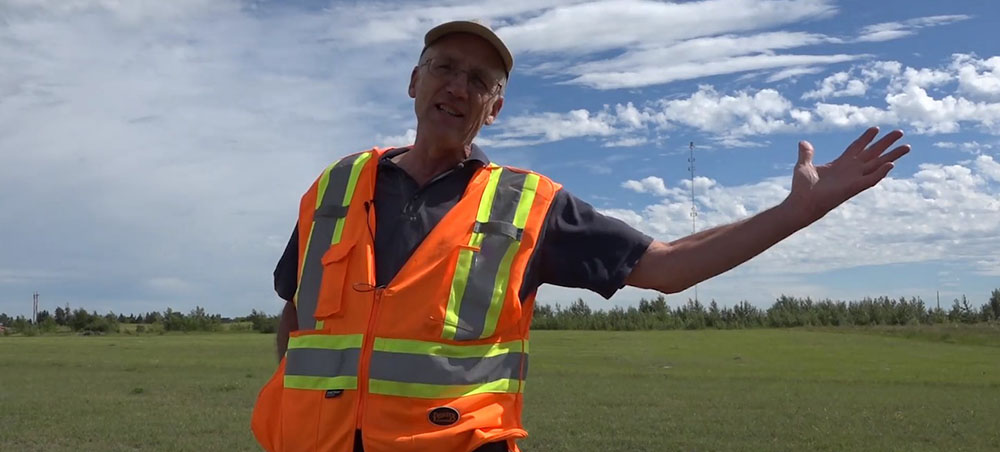
By Harry Brook
This time of year you may often find county staff wandering around your fields. They are identifiable by their safety vests and county trucks parked at the side of the road. They aren’t doing this to irritate you or for the exercise, they are conducting surveys.
There are a number of agricultural field surveys being conducted throughout the summer and early fall. These are often done on behalf of Alberta Agriculture to enable them to get a clear view of the severity of a problem disease or insect. This is part of the Agricultural Service Board responsibilities we incur as counties. These pests are often listed under the Pest Act (such as clubroot of canola or Dutch elm disease). As legislated pests, they must be tracked by your local Agricultural Service Board. Surveys are also done to monitor for any new pest, be it insect or disease.
A requirement of all surveying is to use appropriate protective equipment prior to entering any land. Disposable covers for footwear is a must, to prevent the spread of any soil-borne diseases. Any tools used on the land are also sterilized between fields. These safety measures are part of any survey protocol.
The number of insects and diseases that can be surveyed is large. They include things like Bertha armyworm, flea beetle, numerous cutworms, diamondback moth, clubroot of canola, blackleg on canola, sclerotinia, root maggots, pea leaf weevil, fusarium root rot of peas, ascochyta, lygus bug, wireworm, cereal leaf diseases, grasshoppers, the list goes on.
Insect surveys are done with pheromone traps or sweep nets, checking so many insects per number of sweeps. With these numbers, it can be checked against the economic thresholds. Disease surveys are carried out with individual plant evaluations in multiple sites to get a good, representative sample.
To get a clear picture to forecast future outbreaks or even define the present situation, it requires a small army of people out in the field checking. The more surveys that are done, the more accurate the local and regional forecasts and situations are.
One of the biggest surveys done every fall is the clubroot of canola survey. Due to the sheer number of surveys needing to be carried out, it is impossible to contact all landowners prior to surveying. Please be patient with these surveyors if you see them out in your field.
So now you know the why and wherefore there are county people out in your field. The information they collect helps agriculture both locally, as well as provincially to keep us up to date on threats to our agricultural production. There is a reason for someone out standing in your field.
Harry Brook is Flagstaff County’s Agricultural Fieldman. He can be reached via email at: hbrook@flagstaff.ab.ca or by phone at: 780-384-4138.